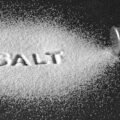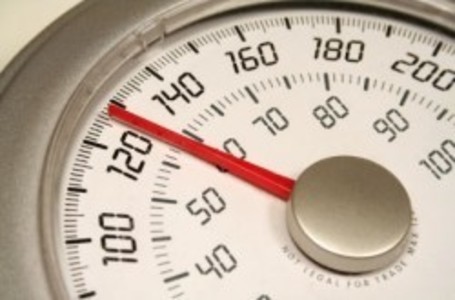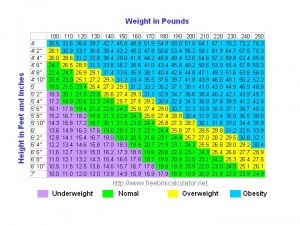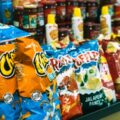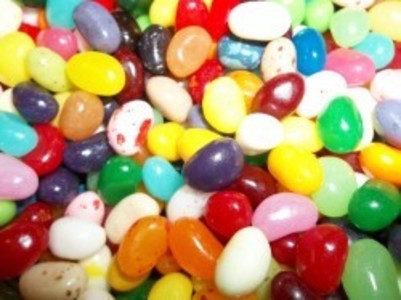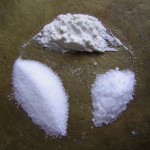We all know that sugar is bad for us but we cannot resist it. Why not? Expert Robert Lustig MD, reasoned on 60-Minutes that for humans in nature all sweet tasting things are edible and not poisonous. There are no toxins in nature that taste sweet, and thus, evolutionarily speaking, favoring sweet things is predetermined in our genes; we are born liking sweets. All of this is true with one major exception: sugar, the natural substance, can become poisonous when modified.
Sugar and Ethanol
Consider the simple modification of squeezing a fruit for its juice. The modification is not chemical: we merely separated the sugary liquid from the insoluble fiber in the fruit–some soluble fibers may remain. This little change makes no difference for most fruits or our taste buds, but it modifies how our body metabolizes sugar in it. According to Lustig’s book Fat Chance (a must read!), when we eat the fruit with insoluble fiber attached (typically the skin), the fructose in the fruit (most sugar in fruit is fructose) bypasses our metabolic digestive process (insoluble fibers are not digestible) and heads straight to the gut where the good bacteria digest the fructose as their food from the fibers, thereby producing more nutrients for us. But if we drink the juice alone without any insoluble fiber, the same amount of fructose now gets into the metabolic cycle and by a complicated process turns into ethanol and gets stuck in the liver. Ethanol is a toxin. Ethanol is an alcohol we also use to improve car mileage. Ethanol causes non-alcoholic “alcoholic” liver disease. In fact, ethanol is alcohol and those drinking apple juice (thinking of kids now) are in fact drinking alcohol in terms of the likely outcome of the metabolic process, as per Dr. Lustig.
So we all thought that feeding our kids fresh fruit juices is a good thing but we also knew that they should not be getting too much sugar because their behavior changes from it. Now it is clear why their behavior changes: the part of sugar that turns into ethanol is alcohol. The other parts of the fruit juice that do turn into digestible sugars (glucose and sucrose) do something else to the body.
What is Glucose?
Glucose is “blood sugar” meaning the sugar our body can use. Sucrose converts to glucose as well. What happens to the glucose?
Some stores sell glucose in a liquid gooey form—thicker than honey—that I recommend you taste. Take a small teaspoon, fill it with glucose and swallow. The first thing you will notice (yes, I did the tasting test) is that it is not that sweet. The second thing you will notice is that the moment you swallow it, you cannot count till 5 and you are hot. So you take your sweater off. Then you have the urge to do something—paint the house? Mow the grass? If you are a kid: bounce off the walls and drive the people around you nuts. This is normal. This is what glucose feels like.
Note, however, that when you eat a teaspoon of table sugar, you will neither feel so hot, nor will you have so much energy. What is the difference? What happens when you drink a diet drink or eat sugar substitutes? You will neither be hot nor have any energy. The difference in feeling hot and having energy versus not feeling hot and not having energy represents the difference in the metabolism of glucose versus fructose and the fake sugar stuff.
The Metabolism of Glucose versus Fructose
I will not get into deep chemical equations or models; for that please watch the video below by Dr. Lustig. Rather, I will reduce all complexity and simply tell you the end of the story with as minimal of the underlying process as possible.
When food arrives into the body, insulin is released to convert the food into fat and deposit it for later use as glucose. Glucose is used by our brain and muscles for energy. After insulin has done its conversion, all insulin is used up. When the brain is hungry, it fetches the hormone leptin to get some energy. Thus, leptin grabs a hold of the available glucose and serves it to the brain (this is highly simplified!). The brain is happy and full of energy.
Now consider the situation when the only food we eat is glucose. Insulin is released but it has nothing to convert. It is already in the final form (glucose for the brain) and so the glucose goes straight to the brain, the kids are popping off the wall, and you suddenly find yourself painting the house. Note, however, that the insulin is in the blood and it is waiting for the food to arrive so it can work and convert it to fat. But there is no food; we only ate glucose and it is already being used by the brain! So what is insulin in the blood to do? Insulin stays in the blood, circles around looking for food. It finds none. By staying in the blood, over time this is a “cry wolf” scenario and the body starts ignoring insulin announcing the arrival of food that isn’t there. This is how insulin resistance starts.
Now consider that instead of glucose, you drink a glass of apple juice. It has natural sugar in it, some vitamins (very little), no fiber, no protein. The sugar of fruit is mostly fructose but a small part of it is also sucrose. So insulin releases again to match the size of the apple juice drink we just had, but again, it faces a problem. While sucrose becomes glucose in our body and can be converted and stored as fat, fructose is not seen as sugar. So once again, insulin is looking for food but finds none; it keeps on circling in our blood looking for food. It is ignored and insulin resistance begins.
The Metabolism of Glucose versus Sugar Substitutes & “Natural” Sugars like Stevia
Now consider you eat a diet something—by diet I mean sugar substitutes with reduced or zero calories. It certainly tastes sweet (very sweet indeed) but again, there is no glucose or sucrose in it and while it does not become alcohol in the liver, it certainly makes insulin run around in circles looking for food to convert to fat and deposit. Cry wolf again and the insulin is ignored. Insulin resistance begins. Why is this important? Because insulin resistance is type II diabetes!
The Famine
Now let’s continue about the peril of our non-toxic sweets. The fact that insulin is out looking for glucose also signals leptin that energy is incoming! Leptin is a hormone that is in charge of messaging the brain that glucose is available. In the case when insulin is running around in our blood in search of food it can convert to fat for later use as glucose but there is no food to be found, leptin finds no glucose. Thus, leptin tells the brain that famine is here.
Famine for the Brain is Obesity for Your Body!
The famine message to the brain means one thing: conserve energy. It reduces all non-essential activities, and literally, will not let you get up from that couch! This is highly simplified of course, but pay attention to the outcome. You are actually eating and drinking and at the same time your brain is getting the message of famine. What will that lead to? When the brain thinks it is famine time, it is famine time. The fact that you are eating and drinking sugar or sugar substitutes with lots of calories is not noticed by the brain. As far as it is concerned, there is no glucose available so it must slow your metabolism. A slow metabolism leads to obesity.
Sugar Anyone?
So, while there are many people who think nothing of having sweets or a soda, consider what it does to your body! Consider that it slows down your activity and forces you into famine state even though you are well fed! Consider that it makes you obese and sets you up for type 2 diabetes.
Now tell me if you still think that sweets are not toxic poisons for us! They are. And there is one more thing to add to the story that no one talks about. I mention this because I deal with a group of migraineurs—I was one of them until I figured things out and wrote a book about it and several articles about it on Hormones Matter.
Consider this quote from the Harrison’s Manual of Medicine:
…serum Na+ falls by 1.4 mM for every 100-mg/dL increase in glucose, due to glucose-induced H2O efflux from cells. (page 4)
Na+ is sodium ion. Sodium is part of sodium-chloride, which is salt. Glucose-induced H2O efflux from cells represents water exiting the cells as a result of an increase of glucose. Why is that, you may ask? The answer is very simple: sugar is an amazing water soak-up device. It pulls water from everywhere it can. It holds onto water like its life depended upon it. Unfortunately for the body, sugar pulls the water from the cells leaving the cells empty on the inside and a lot of fluid tied to sugar on the outside. As long as that sugar is there, the cells are not able to hydrate in any fashion until the level of Na+ is increased beyond a threshold level where Na+ can take water away from the glucose. Na+ also attracts water. In fact, all saline electrolyte liquids provided by IV or for drinking in hospitals are Na+ heavy to rehydrate the cells.
Thus, sugar not only starts and enhances diabetes II and obesity; it also shuts down cell hydration. This may cause headaches or migraines depending on your propensity.
In conclusion, if someone asks you if you would prefer to eat a teaspoon of sugar or a teaspoon of salt, while your taste buds will undoubtedly scream for sugar, you should know better!
We Need Your Help
More people than ever are reading Hormones Matter, a testament to the need for independent voices in health and medicine. We are not funded and accept limited advertising. Unlike many health sites, we don’t force you to purchase a subscription. We believe health information should be open to all. If you read Hormones Matter, like it, please help support it. Contribute now.
Yes, I would like to support Hormones Matter.
References
- Sugar: The Bitter Truth https://www.youtube.com/watch?v=dBnniua6-oM
- Longo et al., Harrison’s Manual of Medicine. 18th edition. McGraw Hill. 2013.
- Artificial sweeteners could cause spikes in blood sugar by By Brady Dennis September 17, 2014
- Washington Post: http://www.washingtonpost.com/national/health-science/study-suggests-sweeteners-could-contribute-to-obesity-and-diabetes/2014/09/17/c3c04ea6-3dc2-11e4-b03f-de718edeb92f_story.html
- Artificial sweeteners could lead to obesity, diabetes. By Michelle Castillo CBS NEWS July 10, 2013, 4:28 PM
- CBS News: http://www.cbsnews.com/news/artificial-sweeteners-could-lead-to-obesity-diabetes/
- Artificial sweeteners may promote diabetes, claim scientists
- The Guardian: http://www.theguardian.com/science/2014/sep/17/artificial-sweeteners-diabetes-saccharin-blood-sugar
- Do Artificial Sweeteners Really Cause Diabetes? By Published: June 7, 2013 By Jessica Chia
- Women’s Health Magazine: http://www.womenshealthmag.com/health/artificial-sweeteners-cause-diabetes
- Could artificial sweetener CAUSE diabetes? Splenda ‘modifies way the body handles sugar’, increasing insulin production by 20% by Rachel Reilly Published: 12:27 Est, 30 May 2013 | Updated: 12:27 Est, 30 May 2013
- The Daily Mail: http://www.dailymail.co.uk/health/article-2333336/Could-artificial-sweetener-CAUSE-diabetes-Splenda-modifies-way-body-handles-sugar-increasing-insulin-production-20.html
- How To Starve Cancer To Death By Removing This One Thing From Your Diet
- Organic Health: http://organichealth.co/starve-cancer-to-death-by-removing-this/
- Is sugar a toxin? Experts debate the role of fructose in our obesity epidemic By Tamar Haspel, September 2, 2013
- Washington Post: http://www.washingtonpost.com/national/health-science/is-sugar-a-toxin-experts-debate-the-role-of-fructose-in-our-obesity-epidemic/2013/08/30/58a906d6-f952-11e2-afc1-c850c6ee5af8_story.html
- Scientific team sounds the alarm on sugar as a source of disease. By Barbara Sadick Chicago Tribune
- The Chicago Tribune: http://www.chicagotribune.com/lifestyles/health/sc-health-1210-sugar-metabolic-syndrome-20141205-story.html#page=1

